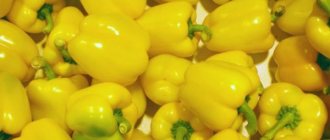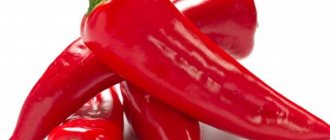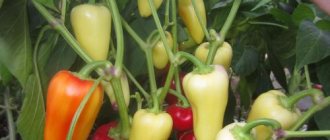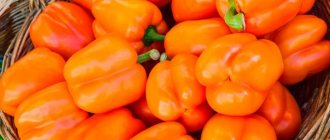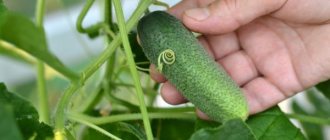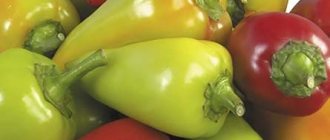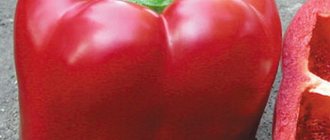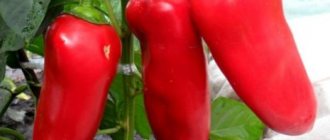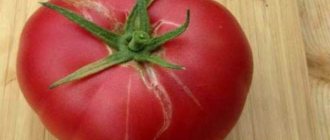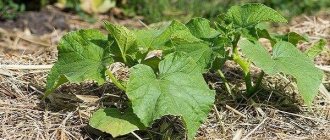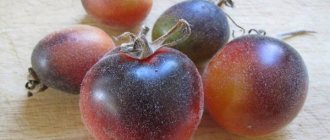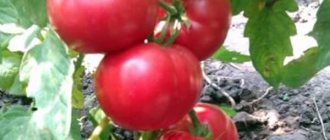Description and characteristics of the variety
Double Abundance is a hybrid with mid-early ripening. It takes 110 to 120 days before the harvest begins. Pepper actively bears fruit in open and protected conditions. Ripening begins in the last days of June and lasts throughout August inclusive.
The hybrid is adapted to weather changes and is not afraid of cold weather or heat.
The bushes ripen from 40 to 50 fruits during the season.
What you should know about pepper:
- average weight 50-80 g;
- elongated cylindrical shape;
- bright ruby color (originally green);
- pericarp 2-4 mm;
- seed chambers 3-4;
- the taste is hot and spicy;
- length 18-20 cm;
- diameter 2-3 cm.
Hot pepper Double Abundance grows in large, strong bushes. The length of the stems reaches 80 cm. The harvest is used in spicy salads, in spicy preparations - adjika, lecho, ajvar. It is dried and prepared into seasonings, powders, and spices.
Hot pepper - description
Hot pepper, which arrived in Russia from distant southern countries, has become very popular in recent years. More and more often you can find this spicy seasoning on the table and in dishes.
The homeland of the famous bitter fruit is India and Central America. This product has been growing there since time immemorial, and therefore everyone treats it like we do, for example, bread. Spicy seasoning is added throughout.
This is interesting: hot pepper is also called “chili”, “spicy”, “bitter”. "Chile" means "red" in the Aztec language. This is no coincidence - the lion's share of hot pepper varieties have red fruits.
The variety of hot peppers is amazing (more than 3000 varieties). Peppers vary in color, degree of heat and appearance.
For reference: the degree of hotness of peppers is measured using the Scoville scale (SHU). So, for example, in sweet pepper this indicator is 0, ordinary hot chili contains 100-500 scoville, and the one included in the book of records for spiciness is 1 million scoville.
Characteristic
Capsicums belong to the nightshade family. All hot peppers are united in a special genus Capsicum, which determines the presence of hotness in the fruit. This genus includes 5 domesticated species of hot peppers:
- Capsicum annuum;
- Capsicum chinense;
- Capsicum baccatum;
- Capsicum frutescens;
- Capsicum pubescense.
In addition, twenty-six wild species are known.
The American chemist W. Scoville proposed his own table for measuring the degree of spiciness of peppers, which is calculated based on the amount of capsaicin (it gives the peppers their spiciness).
Hot peppers are represented by plants that can also be of different heights (determinate, half-dented and indented). The foliage also varies depending on the variety. The fruits of hot peppers almost always have a highly elongated cone-shaped shape. Less common are varieties with fruits in the form of balls and prisms.
Just like sweet peppers, hot peppers at the stage of technical ripeness have a light green color, which most often turns red when ripe. The skin is always rough, ribbed, dense.
Fact: the fruits of some varieties are more pungent when unripe.
As a rule, all capsicums grow small in size. There are specimens whose mass barely reaches five grams. The taste of the fruit is also represented by various shades of pungency, so you can always choose a variety “for yourself” - with a weak pungency, with a strong piquant aroma or “thermonuclear”.
Properties
Hot peppers have truly unique properties that allow the hot pods to be used not only in cooking, but also in medicine and other fields. The fruits of hot peppers have earned such demand due to the presence in their composition of the substance capsaicin - an alkaloid, which is a colorless substrate with a pungent taste. Capsaicin, found in the skin of peppers, has a beneficial effect on the human body.
Fact: Many people think that spicy means harmful. However, based on the results of various studies, it has been proven that eating hot peppers improves health, helps you lose weight, and even cures some forms of cancer.
Peppers are versatile in use. For example, in cooking they can be added to various dishes simply by cutting them into small pieces. People eat varieties that are not very spicy without any additives at all. Thick-skinned fruits are usually added to marinades and pickles. Peppers with thin skin are dried or ground into powder and seasonings are prepared.
Our compatriots are not quite accustomed to adding spice to absolutely all dishes, for example, like the residents of Thailand or Mexico. However, those who often use pepper as a seasoning will note that it gives the dish not only spiciness, but also sophistication and piquancy. Yes, even a small proportion of the presence of this product in a dish will make it unique. Thanks to this unusual property, peppers can diversify the menu - adding it in different proportions, you can experiment constantly.
This is interesting: especially hot pepper harmonizes with garlic, basil and coriander.
For medicinal purposes, various infusions, decoctions and medications are prepared from hot peppers. Hot peppers are especially often included in warming ointments - they soothe the pain of radiculitis, relieve swelling and normalize blood circulation.
The beneficial properties of this product can be listed endlessly. So its main advantages include a beneficial effect on human vision. The fruits help normalize the functioning of the heart and blood vessels, and prevent the development of incurable diseases. The effect of peppers also extends to men's health - the functioning of the prostate gland is normalized. And women can lose weight with the help of peppers. In cosmetology, this product is added to various masks used for hair loss.
Many experts even claim that people who regularly consume at least a small amount of hot peppers daily produce the happiness hormone “endorphin” in greater quantities than those who do not eat chili peppers.
Please note: eating hot peppers without any regulations is dangerous! In addition, it should not be eaten by children, as well as pregnant and lactating women.
Benefits of hot pepper:
- Pepper contains retinol, ascorbic acid, vitamins E, P, B. These elements can cope with migraines, viral infections and colds;
- helps digest heavy foods;
- the presence of hot pepper in a dish can reduce the number of calories by half;
- helps normalize intestinal function;
- eliminates the causes of thrombosis;
- saturates the blood with useful components;
- helps get rid of many “female” diseases;
- hair and nail growth improves;
- fights excess weight;
- pepper restores potency and increases libido.
For whom hot pepper is contraindicated:
- people suffering from high stomach acidity;
- diabetics;
- people with liver and intestinal diseases;
- those who have ulcers or gastritis.
Landing
The sowing period begins 8-10 weeks before the planned transplantation of plants to a permanent location. The seeds are soaked in warm water, then in a disinfectant solution. Potassium permanganate or peroxide will do. To stimulate germination, Epin, Agat, Novosil are used.
Plant in moist, loose soil to a depth of 1 cm. Seedlings will appear after 10-15 days. Before germination, the containers are covered with film and a greenhouse microclimate is maintained (temperature 25-27 degrees, humidity up to 70%).
The seedlings are illuminated with photodiode or fluorescent lamps. The distance to the source is at least 10 cm.
Daylight hours are 14-16 hours (including the sun).
Picking and transplanting into pots is carried out when 2-3 leaves appear. You will need containers with a diameter of about 10 cm and the same height. To feed young bushes, use a diluted solution of mullein, manure, herbal tea, and Azotovit.
10 days before transplanting, the seedlings are placed on the terrace or balcony (at 14-15 degrees) for hardening. The first procedures last a quarter of an hour, then they are extended to 5-6 hours.
Add some heat: domestic varieties of hot peppers
Hot pepper is not the most popular plant in Russian gardens.
Apparently, our cuisine is not too spicy, and the needs for growing this spicy vegetable are limited to one or two bushes. And in vain, because in addition to taste and benefits, the plant also has a very impressive appearance and a lot of other advantages. Add some spice!
There are many types of red pepper in nature. One of the most intricate shapes is a bell, which to some resembles a mushroom, pumpkin, squash, and even a UFO. Its taste is also special: at the bottom it is slightly sour, fruity, and closer to the stem it is sharp. All varieties and hybrids are created on the basis of berry pepper . The species differs from others not only in the shape of the fruit, but also in size; in nature, the height of the bush reaches 3-4 m. In cultivation, it behaves more subdued, so it can also be grown as an indoor (perennial!) plant.
There are many types of red pepper in nature.
In greenhouses and in the ground, it is important not to overdo it with nitrogen fertilizing, otherwise the green giant will grow without flowers and fruits. It is also important to take into account the growing season - from germination to biological maturity it takes from 150 to 200 days, so pepper seedlings should be sown quite early.
Previously, we could only buy imported varieties, but today domestic new products have also appeared on the market.
Our market will help you choose hot pepper seeds - an illustrated catalog that presents products from various online stores.
Hot pepper Phoenix 41 rub.
Russian Vegetable Garden
Hot pepper F1 Chinese fire 19 RUR
Russian Vegetable Garden
Hot pepper Fire-pods 18 RUR
Russian Vegetable Garden
Hot pepper My mother-in-law 22 RUR
Russian Vegetable Garden
- The 'Vizir' variety is suitable for growing in open ground and under film covers. The plant is semi-standard, semi-spreading, tall. Glossy, turban-shaped fruits, light green, later light red (25-30 g). Productivity when grown under film covers is up to 3 kg/m².
- Pepper 'Hot Tongue' is an early-ripening hybrid, valued for its spicy, aromatic pulp with a high content of vitamins, microelements and mineral salts. Sowing seedlings in late February–early March.
- Pepper 'F1 Currant' will surprise you with the aroma of black currant, which intensifies when the fruit is broken. The bush is up to 1 m high and can be grown in the garden or on the balcony or patio.
Left: Pepper 'Hot Tongue', BEST. Price 19 rub. Right: Pepper 'F1 Currant', Russian Garden. Price 29 rub. for 10 pcs.
- The variety 'Bell' has larger fruits (70-90 g). In the phase of technical ripeness they are greenish-white, in biological ripeness they are bright red. The taste is semi-sharp. Productivity under film covers is 4-5.5 kg/m², but it also grows well in open ground.
- Pepper ' F1 Spicy Bell' prefers light, loose soil rich in organic matter. Planted in open ground after the end of return frosts. The fruits at the initial stage are colored green, later turning red (weight 60-100 g). The taste is spicy - from spicy to sweetish with sourness. These bells will decorate the table and add a moderate spiciness to the dishes. The height of the plant reaches 1.5 m.
Pepper 'F1 Spicy Bell' (Russian Garden). Price 23 rub.
- 'F1 Flying Moth' is a mid-season hybrid for open ground and film shelters. A bush 60-80 cm high bears fruit for a long time and abundantly, both indoors and on balconies, and in open ground. Small fruits (30-40 g), bright green, and later yellow-orange with a pungent taste.
- Pepper 'F1 Double Abundance' (Russian Garden) forms only one layer of fruit in open ground, and up to five in greenhouses. When dried, they are stored for several seasons without losing their marketability and taste.
- The hit parade is completed by the pepper-tree - ' F1 New Year's Octopus' . This mid-late hybrid is for greenhouses and front gardens. In greenhouses (with intensive fertilizing, plenty of heat and light), its height reaches 3-5 m. It is distinguished by abundant fruiting (up to 300-500 red “bells” weighing 20-25 g and a medium-sharp taste ripen on the branches at the same time). The hybrid is decorative and disease resistant.
Pepper 'F1 Double abundance' (Russian Garden).
Price 23 rub. Important: varieties of hot peppers are distinguished by the degree of spiciness, among them there are very hot, hot, semi-hot, mildly hot, piquant. When growing this crop, it is important to remember that the pungency of the fruit depends not only on the variety, but also on the light level. To produce hot peppers, plants require maximum light.
Varieties of hot peppers are distinguished by the degree of hotness.
Attention : during cross-pollination - if you plant hot and sweet peppers next to each other - the latter can become hot.
Text: O. Uvarova. Photo: StockFood/Sass, Achim/Fotodom.ru, StockFood/Teubner Foodfoto GmbH/Fotodom.ru PR.
Popular varieties of hot peppers for growing in an apartment
There is a line of varieties of this crop for growing indoors. As a rule, these are perennial plants that require special care. The fruits of indoor peppers are smaller in size than their garden brothers, but they taste just as hot.
The following plants are suitable for an apartment:
- Ogonek is a mid-season hybrid with classic capsicums. The tips of the pods are slightly curved. The fruits are small, fiery red. They are distinguished by their pungency and pronounced peppery aroma.
Ogonyok
- Rowanushka is an ultra-early high-yielding hybrid. The fruits are bright red, spherical. Outwardly, they resemble rowan bunches. Peppers have good pungency and a strong aroma.
- Aladdin - compact bushes bearing fruit with small multi-colored peppers. They are presented in the shape of a cone and are directed upward. Light green, dark green, dark pink, beige, red and purple fruits grow simultaneously on one bush. The pods are great for canning.
- Confetti are dwarf ornamental bushes, not exceeding 35 cm. The fruits are relatively large: from 3 to 7 cm in length. They are presented in a classic cone-shaped shape of various colors: as they ripen, green peppers turn yellow, then turn purple. Ripe fruits have a rich red color.
Confetti
- Salute is an early-ripening ornamental pepper that grows in dwarf spreading bushes. The cone-shaped fruits change color during ripening from dark green to bright orange. Peppers are consumed fresh and canned.
Indoor hybrids have high decorative value. With their exotic appearance, they are in no way inferior to indoor flowers.
